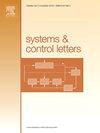Probabilistic control and majorisation of optimal control
Abstract
Probabilistic control design is founded on the principle that a rational agent attempts to match modelled with an arbitrary desired closed-loop system trajectory density. The framework was originally proposed as a tractable alternative to traditional optimal control design, parametrizing desired behaviour through fictitious transition and policy densities and using the information projection as a proximity measure. In this work we introduce an alternative parametrization of desired closed-loop behaviour and explore alternative proximity measures between densities. It is then illustrated how the associated probabilistic control problems solve into uncertain or probabilistic policies. Our main result is to show that the probabilistic control objectives majorize conventional, stochastic and risk sensitive, optimal control objectives. This observation allows us to identify two probabilistic fixed point iterations that converge to the deterministic optimal control policies establishing an explicit connection between either formulations. Further we demonstrate that the risk sensitive optimal control formulation is also technically equivalent to a Maximum Likelihood estimation problem on a probabilistic graph model where the notion of costs is directly encoded into the model. The associated treatment of the estimation problem is then shown to coincide with the moment projected probabilistic control formulation. That way optimal decision making can be reformulated as an iterative inference problem. Based on these insights we discuss directions for algorithmic development.

 求助内容:
求助内容: 应助结果提醒方式:
应助结果提醒方式:


